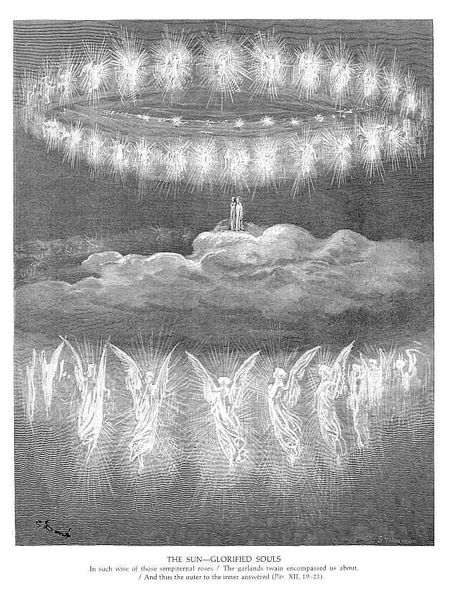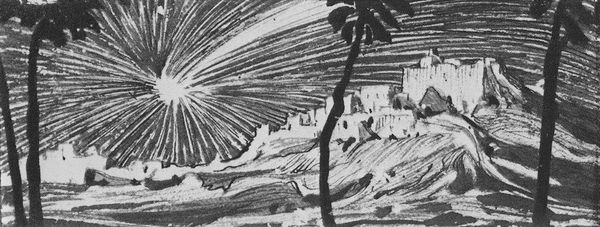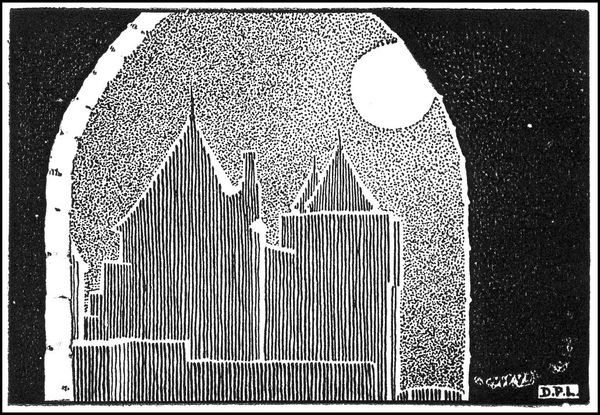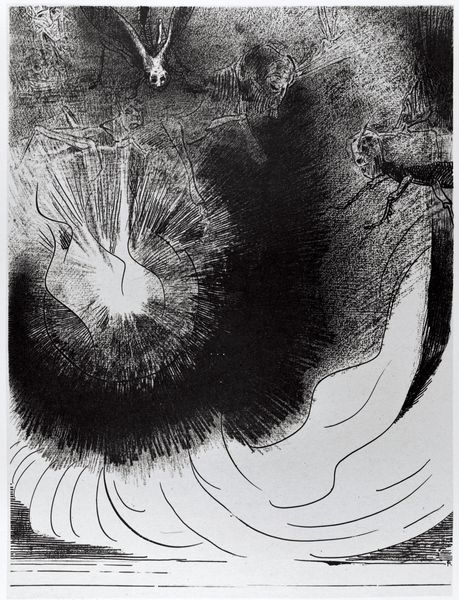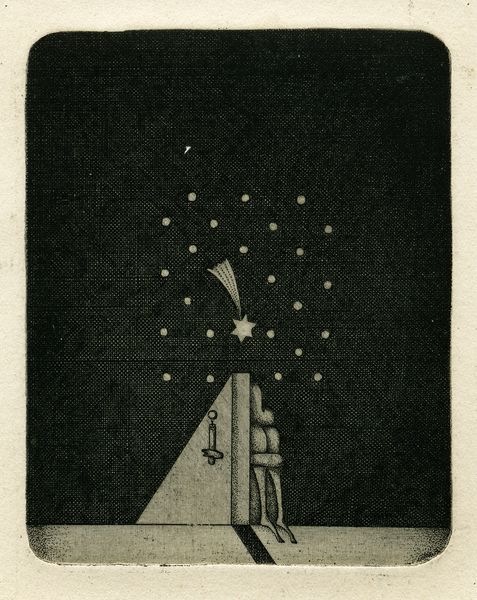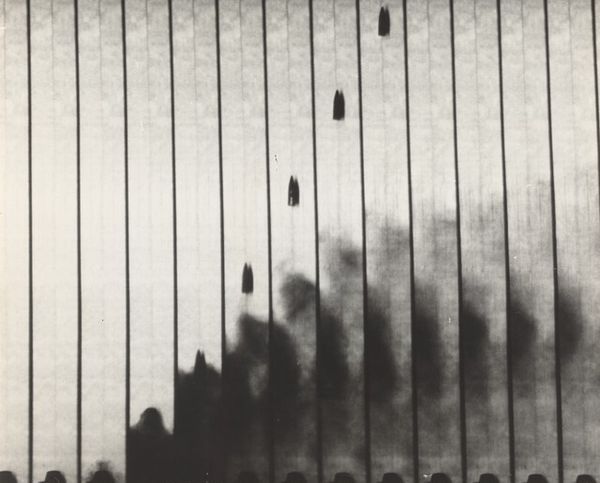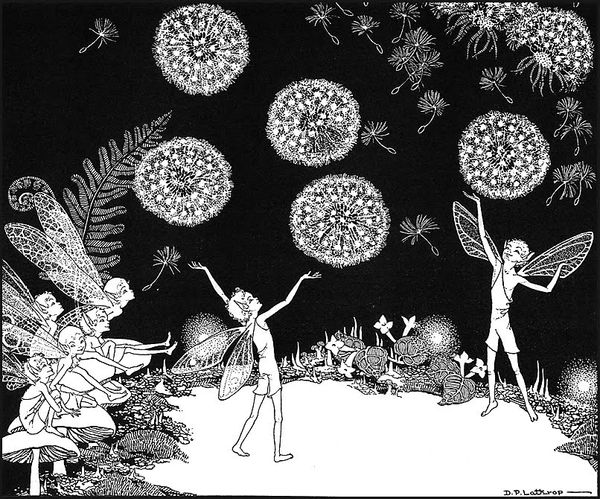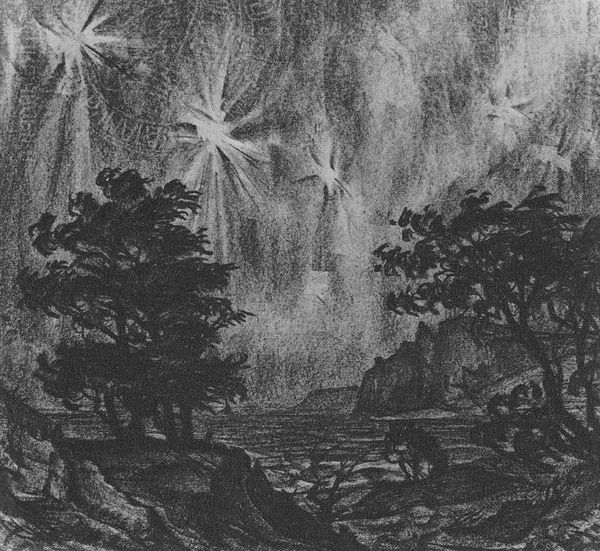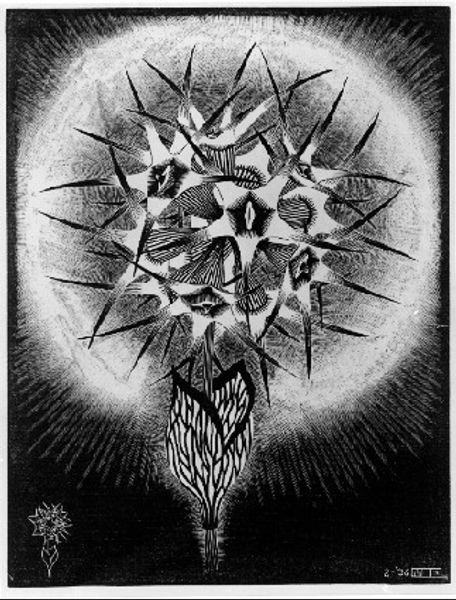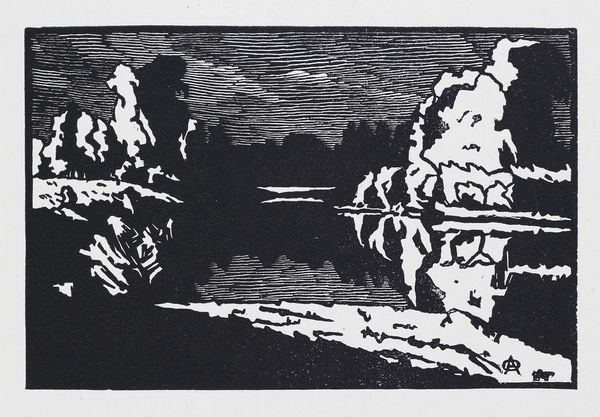
photography
#
tree
#
repetition of black
#
sculpture
#
sculptural image
#
photography
#
unrealistic statue
#
sculpting
#
black colour
#
repetition of black colour
#
carved
#
black colour rhythm
#
organism
#
statue
#
monochrome
Copyright: M.C. Escher,Fair Use
Curator: The artwork before us is M.C. Escher's "Fireworks," created in 1933 using photography. It's striking, isn't it? What's your first impression? Editor: It has a strange and dreamlike quality. The stark contrast of black and white evokes a powerful sense of awe and wonder, tinged with melancholy. Almost like a memory of shared joy, observed from a distance. Curator: I see that. It feels somewhat ceremonial, especially when we consider how fireworks often function. Notice the dense crowd, small under the enormous display, and consider how communal celebration is expressed by these artificial bursts of light. The light radiates downwards like an artificial firmament, reflecting the viewer's upward gaze and their sense of collective spectacle. Editor: Yes, the upshot perspectives! It draws the eye upward and magnifies that feeling, suggesting how civic spectacles like this can be used to unite crowds. Yet it also evokes anxieties concerning authority, perhaps—given how displays of public jubilation often work to consolidate socio-political structures and ideologies? What symbols of power do you find resonate most loudly in this artwork? Curator: Well, look closely at Escher's fascination with tessellation, and the repeating shapes he deployed throughout his career. The fireworks become less a unique display and more a constructed pattern, a sort of enforced uniformity. That touches upon psychological control through shared experience, as the repeating firework shape could symbolize ideological echoes and unified emotion, with individual autonomy potentially sublimated into a broader cultural ritual. Editor: An interesting tension, certainly. He's created a piece about how social groups assemble and act, whilst probing their subconscious impulses. And technically, I'm curious how the effect was achieved so cleanly, especially as photography in the 30s did not always possess that ability to highlight such delicate objects and shapes with clear distinction and tonality. How does he utilize the darkness, especially? Curator: Absolutely. It speaks to Escher's craftsmanship, playing negative space masterfully, letting black accentuate the bursts, perhaps inviting deeper symbolic speculation surrounding control versus the freedom of emotional expression through ephemeral light patterns! The people below, in darkness, look up toward crafted explosions. Editor: In the end, there is the enduring enigma surrounding shared emotions versus enforced social control, beautifully visualized through fleeting beauty, which the black, inky darkness truly enables. A society unified through fleeting flashes of orchestrated brilliance? I keep thinking about how relevant these considerations about freedom and authority still are today. Curator: Agreed. And its testament to Escher's understanding of how visual art becomes a potent lens to analyze cultural behaviour through carefully crafted artistic symbols!
Comments
No comments
Be the first to comment and join the conversation on the ultimate creative platform.
